12 Best Practices for Master Data Management
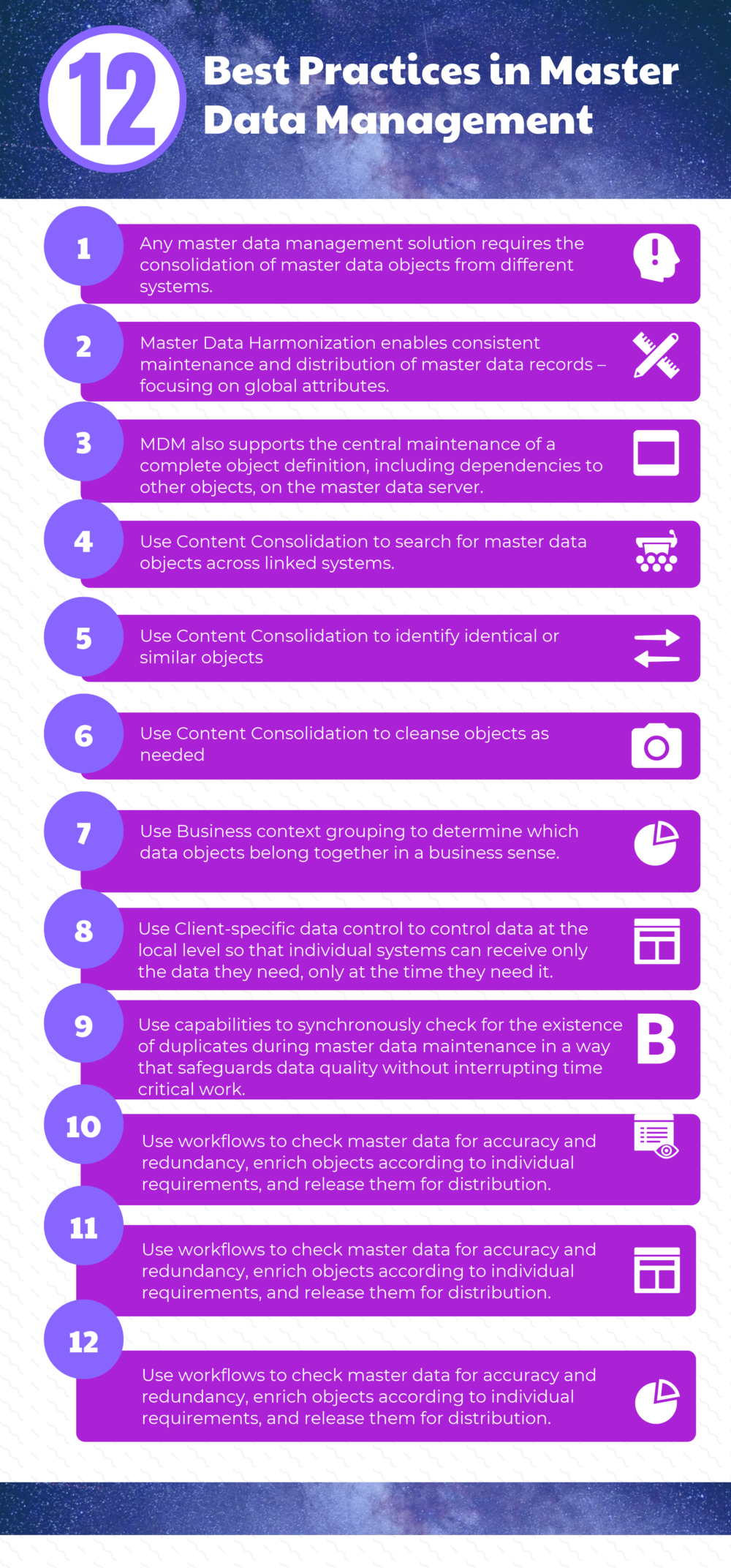
Companies now realize that ongoing competitiveness depends on the ability to free critical business processes from the confines of individual applications and execute them smoothly and consistently across system boundaries.
Master Data Management (MDM) helps companies achieve this challenging goal in a way that leverages the existing system environment and maximizes overall IT investment. Now there is a way to eliminate the data redundancies and inconsistencies that diminish business performance, while truly unifying the extended enterprise at the critical level of business processes.
Master Data Management supports an incremental approach to a cohesive master data management in a distributed and heterogeneous environment.
You may like to read: Enterprise Grade Master Data Management Strategy
What are the Best Practices in Master Data Management?
The Best Practices in Master Data Management are in three process namely, Content Consolidation, Master Data Harmonization and Central Master Data Management.
- Any master data management solution requires the consolidation of master data objects from different systems.
- In addition to the Content Consolidation scenario, Master Data Harmonization enables consistent maintenance and distribution of master data records – focusing on global attributes.
- Maintaining a subset of master data attributes is sometimes insufficient. Therefore MDM also supports the central maintenance of a complete object definition, including dependencies to other objects, on the master data server.
- Use Content Consolidation to search for master data objects across linked systems
- Use Content Consolidation to identify identical or similar objects
- Use Content Consolidation to cleanse objects as needed
- Use Business context grouping to determine which data objects belong together in a business sense.
- Use Client-specific data control to control data at the local level so that individual systems can receive only the data they need, only at the time they need it.
- Use capabilities to synchronously check for the existence of duplicates during master data maintenance in a way that safeguards data quality without interrupting time critical work.
- Use workflows to check master data for accuracy and redundancy, enrich objects according to individual requirements, and release them for distribution.
- To improve efficiency, automate distribution. This involves the use of event triggers, with target systems being determined according to the business context of the event.
- Use the maintenance of a complete object definition including object dependencies in a centralized server for master data.
You may like to read: Biggest Problems in Master Data Management
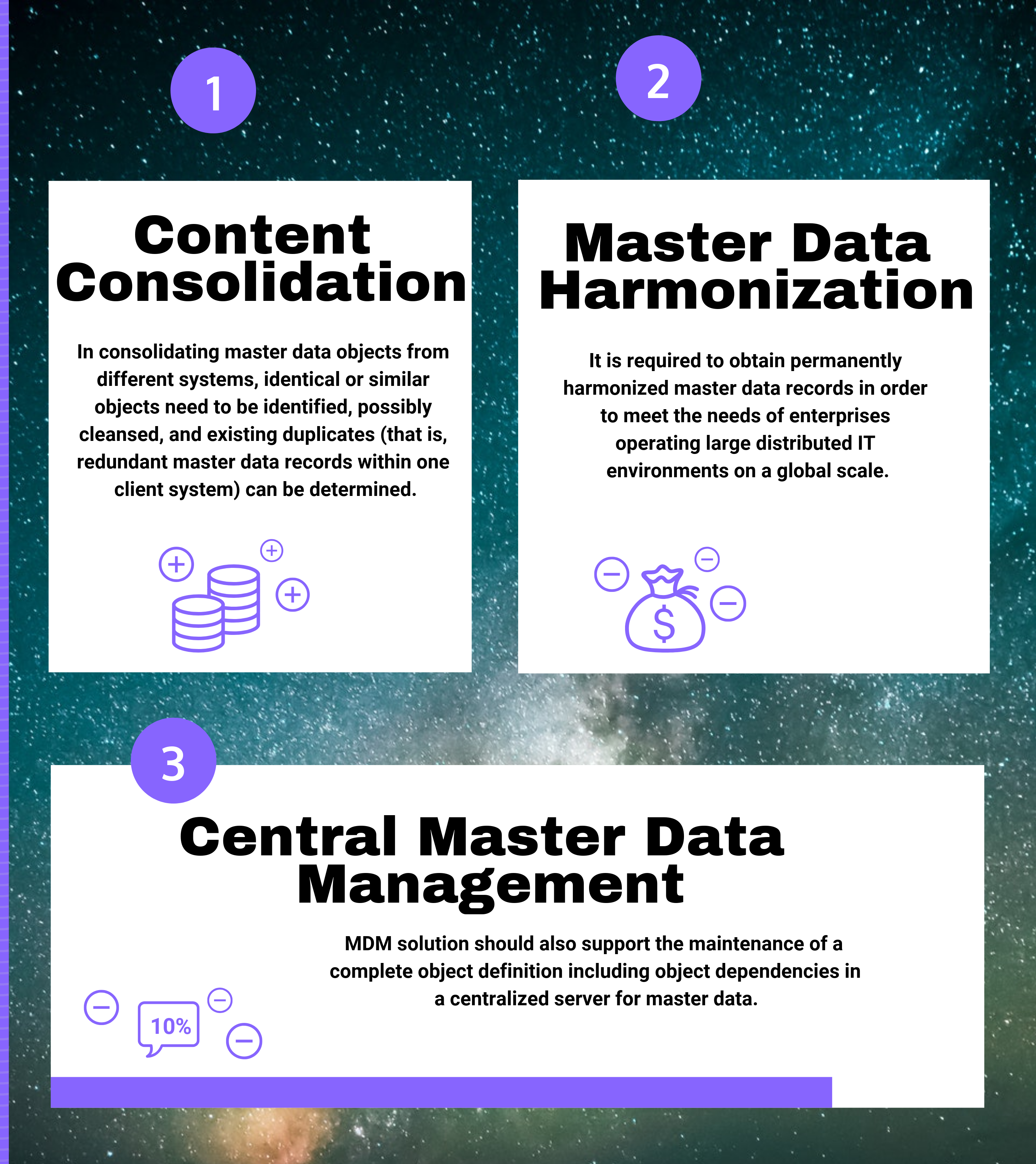
Master Data Management Process
What are the Best Practices in Content Consolidation Process?
In consolidating master data objects from different systems, identical or similar objects need to be identified, possibly cleansed, and existing duplicates (that is, redundant master data records within one client system) can be determined.
This entails capabilities to:
- Search for master data objects across linked systems
- Identify identical or similar objects
- Cleanse objects as needed
After consolidation, information from different systems should be transferred to a business information warehouse where it can be accessed for unified, company wide analytics and reporting.
To minimize disruptions, an MDM solution should enable the consolidation of master data without adjusting originating systems
This kind of flexible, non-intrusive approach to master data consolidation lays the foundation for increasingly useful business analytics that leverage the accuracy of enterprise-wide data. This enables significant new abilities such as the capacity to produce accurate global spending analyses or centralized supplier product catalogs.
You may like to read: Top Master Data Management Software
What are the Best Practices in Master Data Harmonization Process?
Often it is not only necessary to consolidate master data records as described in the Content Consolidation scenario which is necessary for quality master data management, but it is also required to obtain permanently harmonized master data records in order to meet the needs of enterprises operating large distributed IT environments on a global scale.
Consistent maintenance and distribution which leads to the permanent harmonization of master data is also required. Through the use of global attributes, companies can ensure that all systems receive the same master data during distribution. Thereafter, these distributed objects can be enriched with additional attribute values in the target systems.
Moreover, objects that logically belong together can be changed and distributed together. This is helpful, for example, when dealing with the associated master data for a given product. Specifications, rollout schedules, marketing documents and other objects related to the product can be collected together in a consistent packet and distributed in one context to the recipient system.
In order to properly harmonize data across a distributed system landscape, companies will look to their MDM solutions to provide tools and service that can aid in the process. Some of the capabilities companies will be looking for include:
- Business context grouping: This involves determining which data objects belong together in a business sense. For this, time and scope of distribution must be determined according to the life cycle of the business object providing enhanced distribution control with regard to time and location.
- Client-specific data control: Some companies will want to control data at the local level so that individual systems can receive only the data they need, only at the time they need it. This requires functionality that enables local-level systems to distinguish the parts of an overall data object and determine which parts it requires.
- Synchronous duplicate checking: This requires capabilities to synchronously check for the existence of duplicates during master data maintenance in a way that safeguards data quality without interrupting time critical work.
- Seamlessly integrated workflows: Many companies will want to use workflows to check master data for accuracy and redundancy, enrich objects according to individual requirements, and release them for distribution.
- Automated distribution: To improve efficiency, many companies will be looking to automate distribution. This involves the use of event triggers, with target systems being determined according to the business context of the event.
With these capabilities and others, a properly implemented MDM solution can help companies achieve greater business efficiencies through benefits such as better business partner administration, improved management of non-variable parts and the central provisioning of goods.
The complete process within the Master Data Harmonization scenario consists of two major process flows: first, it starts with the initial upload, consolidation, merge and initial distribution of master data; and then, continues with the ongoing master data harmonization.
You may like to read: How to Select the Best Master Data Management Software for Your Business
What are the Best Practices in Central Master Data Management Process?
While maintaining object attribute subsets for local systems might be the smartest course of action for some business processes, companies will want the option of a more centralized solution for other business processes. That is why an MDM solution should also support the maintenance of a complete object definition including object dependencies in a centralized server for master data.
Under such an arrangement, the maintenance of local systems happens rarely if ever. Instead, active status management procedures are used to update each of the individual distribution steps so that distribution can be executed in a controlled, transparent, and traceable manner.
The central maintenance of master data has numerous advantages for global companies seeking ways to enforce, among other things, brand identity and consistent product specifications. For example, a centralized data pool could supply globally dispersed upper management with consistent control over information relating to important global accounts.
A similarly centralized data pool could supply up-to-date product data to multiple locations (including branch offices around the world) for the smooth management of production, assembly, sales, and distribution.
Maintenance in local client systems now happens only rarely or not at all. Active status management updates each of the individual distribution steps, so that the distribution process can be handled and traced in a controlled and transparent manner.
The connected local client systems obtain a harmonized data stock through ongoing central master data maintenance.
Why Master Data Management?
Master Data Management (MDM) helps companies achieve this challenging goal in a way that leverages the existing system environment and maximizes overall IT investment. Now there is a way to eliminate the data redundancies and inconsistencies that diminish business performance, while truly unifying the extended enterprise at the critical level of business processes.
What are the Best Practices in Master Data Management?
The Best Practices in Master Data Management are grouped in three master data processes namely: Content Consolidation, Master Data Harmonization and Central Master Data Management.

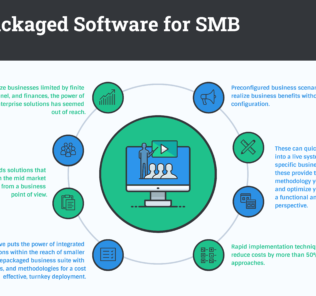
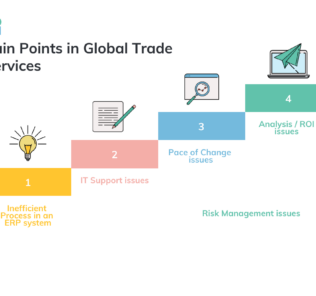
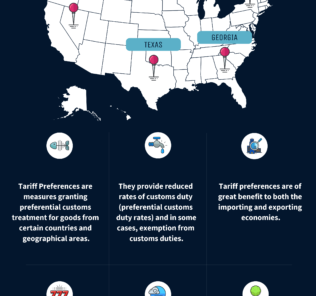

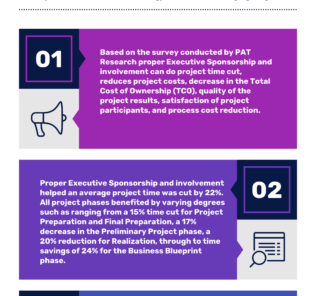
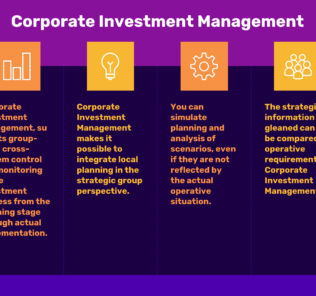




By clicking Sign In with Social Media, you agree to let PAT RESEARCH store, use and/or disclose your Social Media profile and email address in accordance with the PAT RESEARCH Privacy Policy and agree to the Terms of Use.